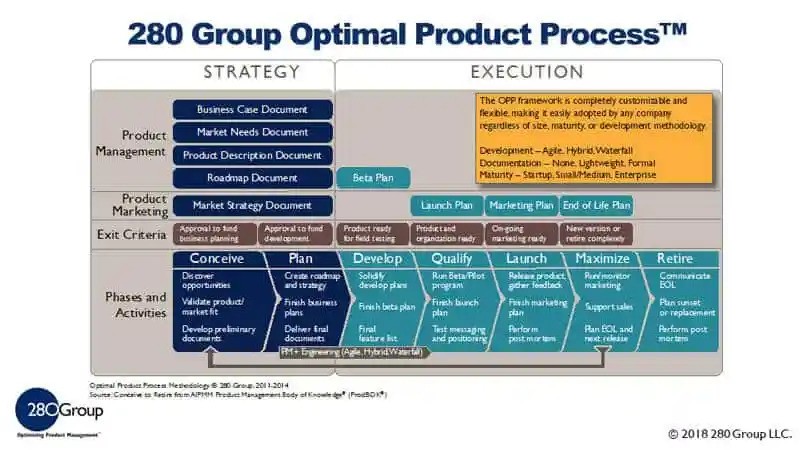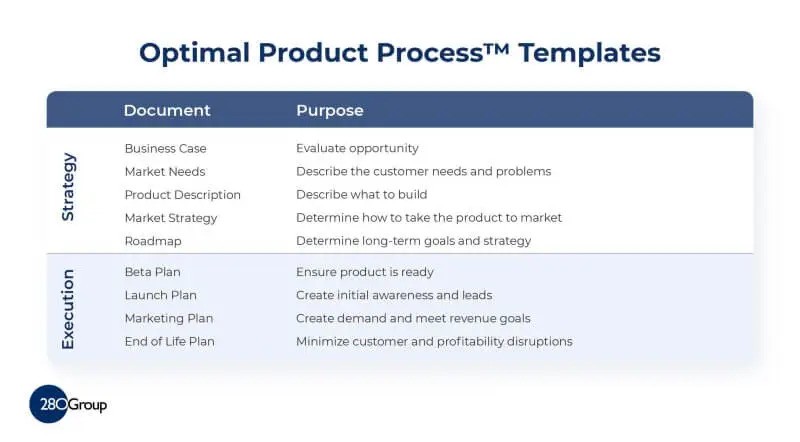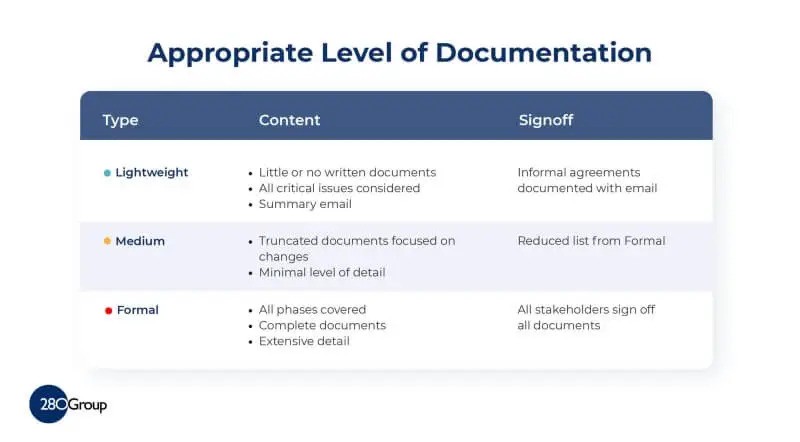
There’s a lot of moving parts in the work that you do as a Product Manager. Keeping it all straight and lining up reasons for the most important decisions you make are a key component of reaching a successful conclusion – and a great product. Our brains don’t help us. They can hold two completely contradictory thoughts at the same time. Getting around our own human instincts is why Product Management tools such as processes, templates and documents are so important. They make sure that we examine and explain our thoughts clearly and comprehensively to key audiences within our company.
Understanding the Nine Core Product Management Documents
The Optimal Product Process™ identifies nine key documents associated with the seven phases of Product Lifecycle. Templates for these documents are included in the 280 Group Product Management Lifecycle Toolkit. Each of these documents includes the critical questions, issues, decisions, and considerations you must address in order to ensure a product’s success. They represent a comprehensive way of ensuring that nothing falls through the cracks and that everything is thought through – thoroughly and effectively.
Product Management Documents: Strategy
- Business Case: Evaluate business opportunity
- Market Needs: Describe the customer needs and problems
- Product Description: Describe what product to build
- Market Strategy: Determine how to take the product to market
- Roadmap: Determine long-term goals and strategy
Product Management Documents: Execution
- Beta Plan: Ensure product is ready
- Launch Plan: Create initial awareness and leads
- Marketing Plan: Create demand and meet revenue goals
- End of Life Plan: Minimize customer and profitability disruptions
Product Marketing is generally responsible for writing the market strategy document, launch plan, and end of life plan as well as writing or contributing to the marketing plan. Product Management is responsible for the business case, market needs, product description, roadmap, and beta plan.
The documents listed under “Strategy” are strategic documents that represent the critical thinking and decision making that should happen upfront. The documents listed under “Execution” are tactical and outline the goals and specific tasks and steps that must happen in order to successfully move your product through the corresponding phase.

The list of nine key documents provides enough information to guide the core work of a project while you bring the product to market. Though you may generate many other documents along the way, think of these core nine as the guardrails of the project to make sure that it stays on track.

Product Managers, Product Marketing Managers and Product Owners work with a wide variety of people and departments collectively known as Stakeholders. Here is a description of the most important of these stakeholders and how Product Management helps them achieve their goals.
What is Product Management’s Relationship To Other Groups and Key Stakeholders?
Avoiding the Zombie Effect
The nine Product Management documents are intended to be guidelines – not absolute. In some cases, filling them out, writing comprehensive documents in every phase, and getting sign-off from the appropriate parties in your company makes sense so that everyone is on the same page. In other cases, such as a start-up that’s moving fast, you can simply use the templates and documents as a checklist to make sure the team has thought out all the critical success factors as early as possible. The level and formality of documentation is up to you based on what your company requires for success.
If you fill out each and every document no matter what then you have become a template zombie. Shake it off and us the documents to help your company make good decisions for the right reasons.



